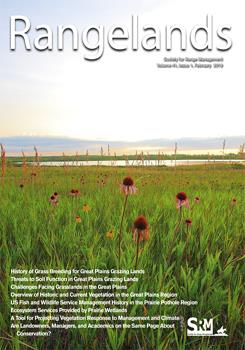The Northern Great Plains contains a diverse group of vegetative communities, primarily dominated by grassland communities.
Precipitation declines along an east-west gradient, ranging from 27.4 inches at Detroit Lakes, Minnesota to 12.4 inches at Miles City, Montana, and productivity follows a similar decline.
Precipitation falls primarily during the growing season, which combined with the lower mean annual temperature results in productive, high-quality, coolseason dominated grasslands.
Although the region is primarily dominated by areas of tallgrass, midgrass, and shortgrass prairie, there are outcrops of limber (Pinus flexilis) and ponderosa pine (P. ponderosa) along the Little Missouri River and stands of quaking aspen (Populus tremuloides) in the Turtle Mountains.
Besides climate and soils, fire, drought, and grazing have also contributed to the rich diversity of communities in the region.
Recent invasions of perennial cool-season grasses are threatening historic plant communities; whether these invasions can be reversed and altered environmental services restored are the primary questions facing grassland managers.
How to translate text using browser tools
6 March 2019
Overview of the Historic and Current Vegetation Near the 100th Meridian in North Central United States
Charles Lura,
Jeffrey Printz,
John R. Hendrickson
ACCESS THE FULL ARTICLE

Rangelands
Vol. 41 • No. 1
February 2019
Vol. 41 • No. 1
February 2019




